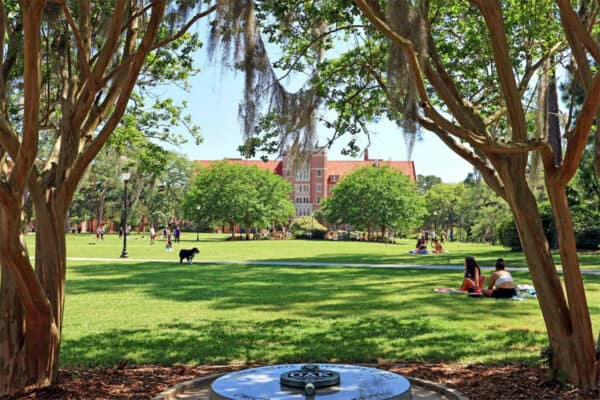Burmese python sightings increasing in Southwest Florida
CHARLOTTE COUNTY, Fla. – The Florida Fish and Wildlife Conservation Commission recently issued a report confirming Burmese pythons have been slithering their way more frequently into Southwest Florida.
According to the FWC, Burmese python sightings have increased in western Charlotte County, Lee County, and southern Sarasota County from 2015-2024. The snake has been specifically documented within the townships of Rotonda, Placida, Englewood, Gasparilla Island, and Port Charlotte.
“While ultimately unknown, there is no indication at this time that the Burmese pythons in this area are a result of natural migration from the Burmese python population in South Florida,” the commission said. “The FWC suspects that initially these animals were likely escaped or released captive animals.”
In 2020, the FWC received a rise in python reports which resulted in an increase in surveys around the region. Over that period, 12 of 25 pythons were captured or found dead on the road and removed, including seven carcasses being turned over to the commission.
Burmese pythons are considered invasive to Florida, meaning the snake does not belong in its environment. The snake itself is a large, nonvenomous constrictor primarily found in the Everglades in South Florida.
“Burmese pythons are a Prohibited species in Florida, thus it is illegal in Florida to acquire a Burmese python as a pet,” the commission said. “Executive Order 23-16 allows for the lethal take of pythons and other nonnative reptiles from 32 Commission-managed lands year-round using humane and legal methods, with no bag limits.”
Native to Asia, the snake’s habitat stretches from India to China and portions of southern Indonesia. The snake can also be documented in extremes in elevation, from the lowlands of Cambodia to the foothills of Nepal in the Himalayas.
The snake can be identified by its tan color with dark blotches along the back and sides. Its markings are similar to puzzle pieces and they have a pyramid-shaped head with a dark, arrowhead-shaped wedge extending to the nose.
Stateside, Burmese pythons have established and reproduced in Florida since at least 2000. The snake was originally released accidentally or intentionally through the pet trade largely in the 1980s and presents a threat to native wildlife.
Although, Burmese pythons were first removed in South Florida as early as 1979. The population has since ballooned and suffocated the Everglades region.
Ever since, the Burmese population has been documented between 100,000 and 300,000 in the Everglades. As many as 100,000 snakes also were imported to the United States, largely to Florida, between 1996-2006.
Florida has banned Burmese python pet ownership since 2010. The U.S. Department of the Interior also prohibited the importation of the snake in 2012.
Burmese pythons preys on mammals, birds, reptiles and amphibians, including bobcats, opossum, raccoons and rabbits. These animals, since the python’s unwanted arrival, have dropped by 88 to 100 percent in areas of the Everglades ecosystem.
On average, Burmese pythons grow between six and nine feet. Although, the snake has reported to reach over 20 feet in length.
In Florida, a female Burmese python was captured in the Everglades measuring 17 feet, 7 inches and weighing 164.5 pounds in 2012. The snake, which was eventually euthanized, contained a record 87 eggs and is considered the largest snake ever captured in the state.
In 2017, the FWC initiated the Python Elimination Program, which allows public hunting of the snakes on designated lands in Monroe, Miami-Dade, Broward, Collier, Hendry, Lee and Palm Beach counties.
“Burmese pythons can also be humanely killed on private lands with landowner permission by legal methods for the local area,” the commission said. “Every python removed from the Florida landscape is one less invasive snake impacting our native wildlife and ecosystems.”
The FWC encourages public involvement in python surveys by going here. The commission also asks local residents in the impacted area to increase reports of python removals or sightings.
“Public reports will be used to help assist biologists in understanding python activity and rapidly respond to and remove Burmese pythons from this area,” the commission said. “These reports are crucial to minimizing impacts of the species on native wildlife while slowing population growth and spread.”




